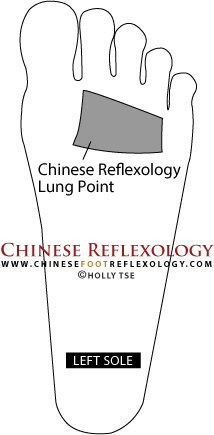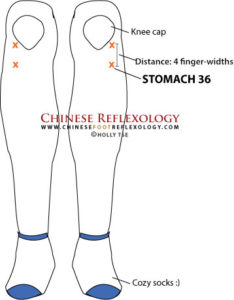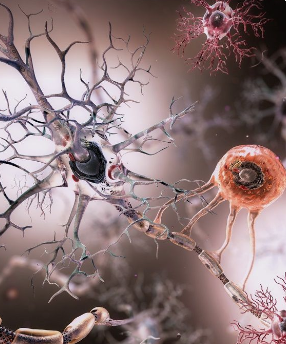Supporting lung health is a big focus as of late, but we are also getting close to allergy season starting here in New England so strengthening your lung health will help us navigate allergies as well.
Why? Because the lungs, in traditional Chinese medicine, control the important "first responders" when it comes to our immune system.
Let’s explore these and how you can support your lung health from home.
1). THE SKIN
The skin is one of your first responders in your immune system.
It is not only a protective barrier to your muscles and internal organs, but is considered an active immune organ.*
For example, whenever the skin barrier is breached, cytokines are released, signaling to the body’s immune system to respond to the breach and act accordingly to protect the body from any potential invasion of a pathogen.
In traditional Chinese medicine, our Wei Qi, flows just below the surface of the skin, between the skin and muscle.
Wei Qi is the energy of our body’s defense system and when strong has the ability to “kick out” any invading pathogen that could potentially make us sick.
If our Wei Qi is weak, however, the pathogen can invade and begin to cause signs and symptoms of illness.
So, the saying that the strength of the host is most important versus the strength of the pathogen is very true and why we want to keep our immune systems as strong as possible to stay healthy in light of illness causing viruses.
2) THE NOSE
The lung system in traditional Chinese medicine opens to and controls the nose.
Our nose is an important first responder in our immune system because it can “catch” invading pathogens before they have a chance to fully invade and make us sick.
When you breathe through your nose, the hairs, mucus and cilia lining your nasal passages catch and remove infectious bacteria and viruses as well as debris, pollen and dust when we breathe through our nose.
This is why breathing through your nose versus your mouth is so vital.
Mouth breathers should take notice of a second vital function of the nose.
Nasal sinuses produce nitric oxide, which plays a key role in our immunity by killing bacteria and preventing pathogenic growth as well as stimulating cilia in the nose to catch more illness causing bacteria!
Breathing through our mouths does not produce nitric oxide and gives direct access to invading germs to our lungs.
The lung system, in addition to supporting Wei Qi, skin health and nose functioning, also controls our respiratory function and breathing as well as the dispersing and descending energy.
The following symptoms may suggest a weak lung system:
-
Weak or shallow breathing
-
Wheezing or shortness of breath
-
Heaviness in the chest
-
Fatigue and lack of energy
-
Skin problems
-
Frequent colds and a weak immune system
-
Sadness and grief
Support Your Lung Health with Acupressure
One way you can support your lung health easily at home is with acupressure.
Acupressure is a technique that utilizes a finger or thumb to apply pressure on an acupuncture point on the body, thus stimulating the healing properties of that point.
A great point to start with to strengthen lung health is Lung 1.
The lung energy channel begins at the acupuncture point Lung 1 at the top of the chest, just inside from the shoulder joint, about an inch below the clavicle.
Once you locate the acupuncture point, simply apply pressure on that area with your finger or thumb for approximately 30 seconds. Pressure should be firm but not painful.
Repeat this process on the same point on the opposite side of the body for another 30 seconds.
Apply acupressure at least once a day on these points or as many times as needed throughout the day whenever you need relief and to strengthen the lungs.

Picture from A Manual of Acupuncture by by Peter Deadman & Mazin Al- Khafaji with Kevin Baker.
2 Points to Boost Your Immune System
Looking for a natural way to boost your immune system? If you’re feeling stressed out, super busy, or you’re not getting enough sleep, this can make you more likely to get sick. Fortunately, your body has its own built-in system to keep you in balance.
According to Traditional Chinese Medicine (TCM), there are 12 primary energy pathways or channels running through your body. These channels influence your energy levels, mental clarity, digestion, overall health, emotions, and more. While this powerful system doesn’t come with an operating manual (unless you include the ancient TCM texts), there are ways to “reboot” and strengthen the system to keep your body healthy and strong.
Two Powerful Immune-Boosting Points
Your body has two pressure points that help strengthen your body whenever you’re feeling run down and need a quick boost for your immune system. Practice these points daily—they take just 90 seconds to massage—and they’ll give your body a surge of qi (life force energy) to help keep colds and flus away during stressful times.
And if you need a stronger boost because you may already be fighting off a cold, there’s also a 5-minute reflexology cold remedy routine to use when you’re sick. But for now, let’s focus on prevention so that you hopefully will never need the reflexology routine for getting over a cold.
Chinese Medicine Perspective on Your Immune System
An article on boosting your immune system to prevent colds wouldn’t be complete if I didn’t explain the hows, whats, and whys. Let’s look at this from a Traditional Chinese Medicine (TCM) perspective.
In Chinese Medicine, germs are described as “external evil” or “external pathogens,” which is not all that different from the western perspective. When you’re exposed to a virus, your body can either let it in or refuse it entry—so your body is a bit like a castle defending its gate. Your body can let the invaders into the kingdom, or it can stop them before they even penetrate the wall surrounding the castle.
In Chinese Medicine, the organ (and its associated energy meridian) that maintains your body’s “wall” of protection is your Lungs. It is said that the Lungs disperse wei qi, also known as defensive qi. It’s a special kind of qi that creates a barrier of protection against those pesky evil invaders.
Now if a few sneaky germs find a crack in the wall and sneak through, your body has another organ/energy meridian that also acts as a line of defense—and that would be the Spleen. And in Western medicine, the Spleen plays a role in supporting the immune system by producing white blood cells that help fight infection.
In Chinese Medicine, the Spleen works together with your Stomach to transport food essence (aka nutrients), and also clear out mucus. So in order to help your body repel the invaders, you need a way to strengthen your Lungs and also support your Spleen, which you can do through its relationship with the Stomach.
1. Chinese Reflexology Point for the Lung
 The Lung reflexology point is a key point in my 5-minute cold remedy routine, but it can also be used on its own. It’s an outstanding standalone point for boosting your Lung qi, which then helps to disperse the wei qi throughout your body to fortify your body’s protective barrier against germs.
The Lung reflexology point is a key point in my 5-minute cold remedy routine, but it can also be used on its own. It’s an outstanding standalone point for boosting your Lung qi, which then helps to disperse the wei qi throughout your body to fortify your body’s protective barrier against germs.
How to Locate and Massage the Lung Reflexology Point
This Chinese Reflexology point is located on the balls of both of your feet. It is a rectangular-shaped area on the ball of the foot below the three middle toes. To massage this area, wrap the fingers of both hands around the foot, and then press deeply into the Lung reflexology area with both of your thumb pads and massage in small circles. After you’ve massaged one spot, move your thumbs across the Lung point and repeat. Be sure to massage the entire Lung area for a total of 30 seconds per foot.
2. Stomach 36 – Zu San Li
This acupressure point is a classic that is commonly used by acupuncturists for treating patients for a wide range of conditions. This point is especially powerful for improving digestion and for boosting the immune system. It’s also used to treat a long list of conditions, including: stomach pain, hiccups, bloating, nausea, vomiting, diarrhea, constipation, and mastitis.
How to Locate and Massage the Stomach 36
 Zu San Li, aka Zusanli or Stomach 36, is located on the front of your lower leg below the knee cap and toward the outer side of your calf, and there’s a Stomach 36 point on each of your legs. There are four steps to locate this point, and I’ll walk you through them for your left leg:
Zu San Li, aka Zusanli or Stomach 36, is located on the front of your lower leg below the knee cap and toward the outer side of your calf, and there’s a Stomach 36 point on each of your legs. There are four steps to locate this point, and I’ll walk you through them for your left leg:
- Sit at a chair with your knees bent. Then feel for your left knee cap. Easy enough, right? Err, I mean left!
- Underneath the left knee cap, on the bottom outer edge, you will feel a slight depression. Place your left index finger on this “dent.” And no, you haven’t yet found Stomach 36, but you’re almost there!
- Press the four fingers of your right hand together next to each other.
- Place this “stack” of four fingers directly below the dent you found under your knee cap. Lift up your left finger and place it directly below the stack, in line with the dent under the knee cap.
Woohoo! Kudos to you! You just located your Stomach 36 point. Repeat the same procedure (switching sides) to find this point on your right leg.
Another way to look at this point, would be to imagine that you are looking down at a cross section of your lower leg. If you imagine this cross section as the face of a clock, on your right leg, Stomach 36 would be where the hour hand is when the time is between 1pm and 2pm, or around 1:30pm. On your left leg, check for between 10pm and 11pm or around 10:30pm.
You can massage this point on both of your legs at the same time. Make fists with both hands. Reach down to the point, press your knuckles in, and rub up and down. It’s not that unusual for this area to be sensitive, especially if you have poor digestion. Massage up and down with your fists for 30 seconds.
Daily Practice
So let’s sum everything up with your daily immune-boosting practice:
- Massage the Lung point on your soles for 30 seconds per foot
- Massage both of your Stomach 36 points at the same time for a total of 30 seconds
And that’s it! Only 90 seconds each day to give your body a boost of qi to help protect it from external evil! Muhaha!
But If You Really Want to Stay Healthy, Read This…
If you really want to stay healthy, you have to look at the emotional roots of why you get sick. Which activities lower your energy defenses and make you more likely to catching a cold? And more importantly, why do you keep doing them?
All the reflexology and acupressure in the world won’t be as effective as simply eliminating the bad habits and poor choices that weaken you body. When it comes to catching a cold, it all boils down to one thing: doing too much. Before anyone catches a cold—with the exception of little kids who are still developing their immune systems and who percolate in a petri dish of germs called school (just kidding!)—the cold is always preceded by trying to squeeze in one more thing.
It’s the extra project, saying yes when you really want to say no, the three late nights in a row, and pushing yourself when you need to rest. Did you know that you are four times more likely to catch a cold when you don’t get enough sleep? A recent study by the University of California San Francisco (UCSF) found that people who slept six hours or less a night are four times more likely to catch a cold when exposed to a cold virus, than people who get seven or more hours of sleep.
When you’re feeling stressed and overwhelmed, practicing the two pressure points in this article every day can help your body defend itself against invaders. But what’s even better is to also look at why you’re feeling so stressed and overwhelmed. What changes can you make so that your life is less busy and stressful? Your heart’s probably whispering an answer to you right now as you read this question.
Listen. Your body will thank you.
Stay healthy!









